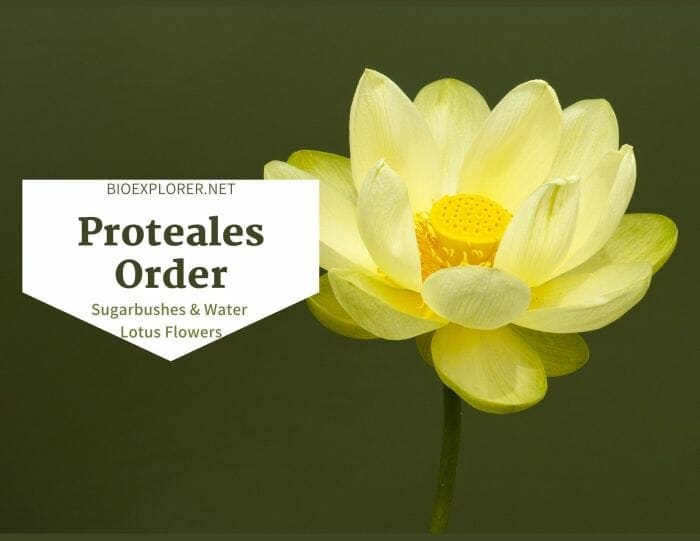
Proteales is a part of peripheral eudicots classified together only recently. Members of Proteales are distributed in tropical and subtropical regions. Plants of Proteales are dicotsWhat is dicots?Angiosperm with two cotyledons. Cotyledon is seed leaf; the first leaf (or set of leaves) to appear during the early development of a seedling. with proteiod roots, uniseriate perianth, superior ovary, and possess 1 ovule per ovary (except Sabiaceae).
The Proteales flowers are small or large and unisexual or bisexual. The American Lotus and large-nut sugar bush are examples of Proteales.
Table of Contents
Proteales Families
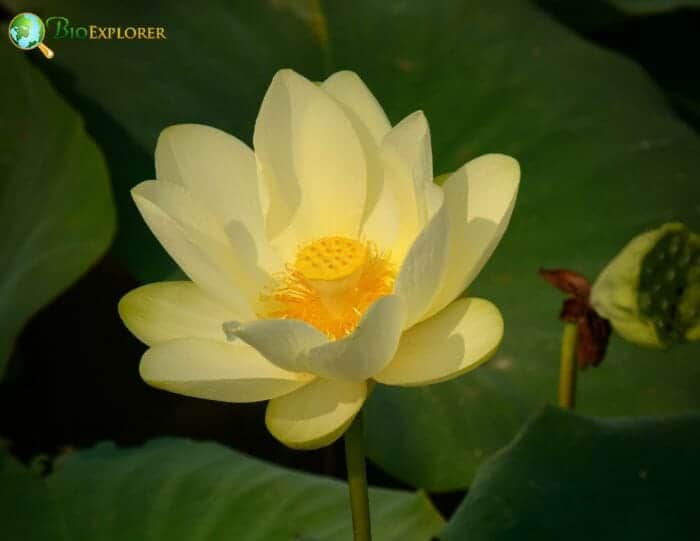
Proteales is a member of the dicotyledonous flowering plants consisting of 4 families, 85 genera, and 1750 species[1]. Families under this order lack obvious links in their morphological characters; however, the sequences in their DNA[2] reveal their natural group connections.
The following are the families under Order Proteales:
- Nelumbonaceae (Water Lotus family).
- Platanaceae (Sycamore family)
- Proteaceae (Sugarbushes family)
- Sabiaceae
![]()
Proteales Distribution
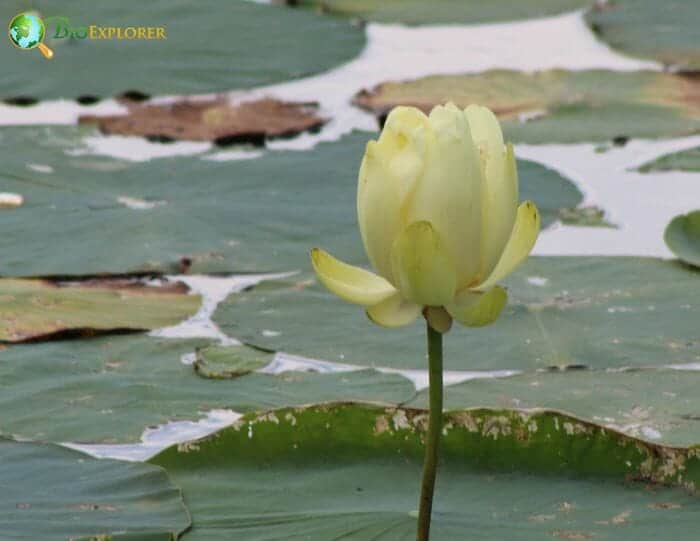
- The species of Proteaceae (68 genera and 1252 species)[3], the largest genera, can survive both in the rainforest to very dry (xeric) habitats of the tropical and subtropical regions. They are primarily found in Australia and South America. However, members also live in South Africa, New Caledonia, Eastern Malesia, and New Guinea.
- The Sabiaceae family (3 genera and nearly 100 species)[4] is distributed through Asia and America’s tropical and subtropical regions. Two genera are found in tropical America, 7 species of Ophiocaryon are living in South America, and the Meliosma members are growing in Asia, North Mexico, and Central and South America.
- The main distribution of Platanaceae (1 genus and 8-10 species)[5] is in temperate North America. A few species are found in southeastern Europe and southwestern Asia to India. Species are also found in Indochina and Guatemala.
- Nelumbonaceae (1 genus and 2 species)[6] have 2 species. The N. lutea are distributed in North and South America, while N. nucifera are found in Asia to Northern Australia.
![]()
Proteales Characteristics
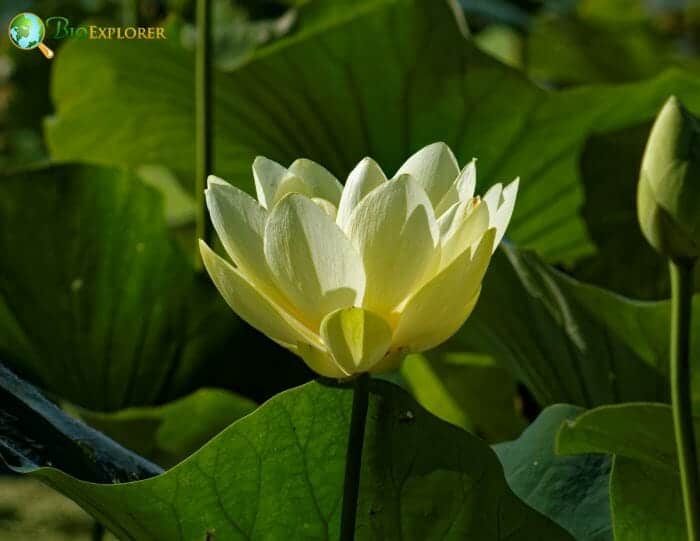
Order Proteales achieves one of the most controversial classifications because the families do not possess many similarities in their morphological characters. However, the DNA studies[7] result in the placement of these families under a single order.
- Plant type: Members of Proteales are shrubs, trees, lianas, or aquatic herbs.
- Roots: The shrubs and trees of Proteaceae have proteiod roots.
- Stem: The families of Platanaceae and Proteaceae have the same wood anatomy. The trees have exfoliating bark and encircling stipules.
- Leaves: The leaves can be alternate, whorled, or opposite. Most of the species of Proteaecea have marginal teeth and stipules. The species of Proteales may be petiolate or sessile.
- Flowers and Inflorescences: The flowers can be small or large, solitary or in pairs. Some species are in inflorescences of terminal racemose, raceme-like, compressed, or condensed in axillary or terminal panicles.
- Sepals and petals: Most of the flowers have perianth in 1 whorl. The majority of the Proteales species have 4 sepals and 0 petals.
- Stamens and carpels: Usually, the members of Proteales have 4 stamens joined to the perianth segment’s tips. Most species are unicarpellous.
- Ovary and fruit: The ovary is superior. The fruit is a follicle, nut, aggregate of nuts, achene, multiple achenes, or drupe.
- Seeds: The seeds are exalbuminous.
![]()
Proteales Flowers and Reproduction
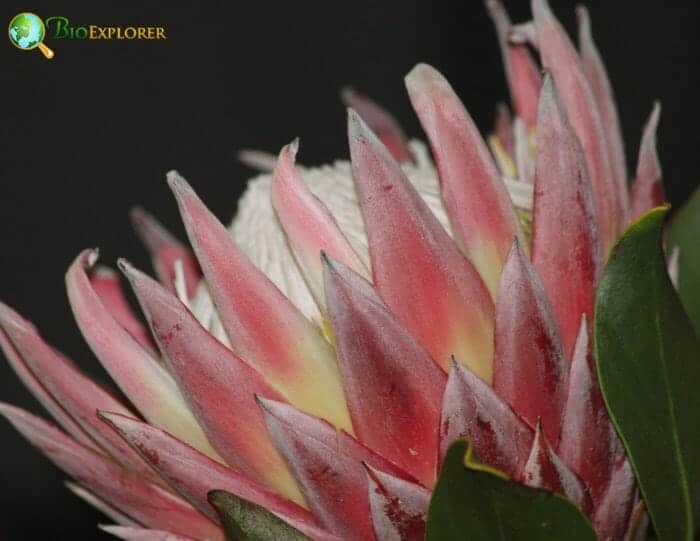
- Nelumbonaceae flowers are solitary, large, and attractive. Color is pink to white, yellow, or red. The terete peduncles hold the flower above the water. Flowers are bisexual, ebracteate, and actinomorphicWhat is actinomorphic?A characteristic of the flower exhibiting radial symmetry such as starfish or Daisy flower; capable of being bisected into identical halves along more than one axis, forming mirror images. Opposite is Zygomorphic.. The tepals are distinct, with 2-5 sepals and 20-30 petals. There are 200-300 stamens. The enlarged and spongy receptacle has 2-30 free carpels. Nelumbonaceae flowers are pollinated by beetles.
- Platanaceae have small flowers. The inflorescences are unisexual heads in a terminal and pendant spike. The perianth has two whorls or rows (biseriate). The calyxWhat is calyx?A collective term for all the sepals of a flower; the lowermost whorl of floral orgrans (Plural form is calyces). has 3-7 sepals separated (aposepalous), and the corollaWhat is corolla?A collective term referring to the petals of a flower. has 3-7 petals separated (apopetalous). Sometimes the female flowers have no petals. The flowers of this family are wind-pollinated.
- Sabiaceae are relatively small flowers. The flowers are condensed and almost sessile in terminal or axillary panicles. The hermaphroditeWhat is hermaphrodite?An organism or structure possessing both male and femal reproductive organs; a flower with both stamens and pistils. Other synonyms: bisexual or monoclinous. flowers are either actinomorphic or zygomorphicWhat is zygomorphic?A characteristic of the flower having only one plane of symmetry, as in a pea or snapdragon; bilaterally symmetrical; especially in reference to a flower or corolla; Opposite is Actinomorphic; irregular flower;. The sepals and petals are both 4-5. The ovary is superior with axile placentation.
- The Meliosma is the tree genus of Sabiaceae that has flowers that resemble disc. These flowers release pollen exclusively through an explosive pollen mechanism. The drone of bumblebee species[8] Bombus ardens is the primary pollinator M. tenuis. .
- Proteaceae flowers exist as solitary or paired flowers. In rare instances, the inflorescence is a terminal racemose or raceme-like or compressed. The bisexual or unisexual flowers are either actinomorphic or zygomorphic. There is only one whorl in the perianth (uniseriate). There are 4 sepals in the calyx and no corolla. The corolla is converted into small scales or nectariferous disks. Most of the species of Protea are pollinated by birds. However, rodent pollination and cetoniine beetle pollination[9] also occur. Additionally, the long-proboscid flies and butterflies pollinate the P. punctata in the Swatberg mountains.
![]()
Proteales Family Differences
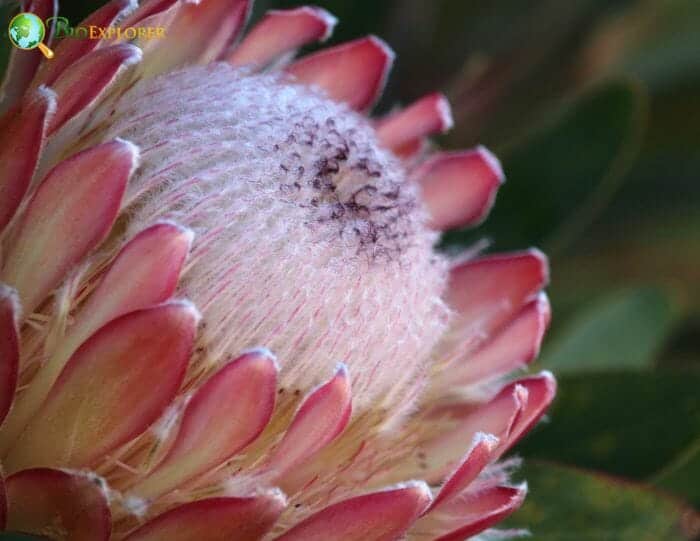
Nelumbonaceae
- Members are characteristically aquatic herbs.
- The vascular tissue in the stem occurs as scattered bundles (atactostelicWhat is atactostelic?A stele consisting vascular bundles scattered throughout the parenchyma tissue of the stem.).
- Species have spiral, concave, and simple leaves. Members have developed petioles.
- The flowers are large and solitary.
- Flowers are bisexual.
- The gynoecium has a set of many pistils (apocarpous).
- The ovules are attached at the top of the ovary (apical placentation).
- Proteales fruits are an aggregate of nuts.
![]()
Platanaceae
- Members are characteristically monoeciousWhat is monoecious?Pertaining to plants, individuals of which bear both staminate and pistillate flowers, but not necessarily perfect flowers. trees having exfoliating bark and encircling stipules.
- The leaves are simple, alternate, and palmately lobed. The leaves also possess netted venation.
- The unisexual flowers are small in a pendant spike of heads.
- The ovary is superior with the apocarpous gynoecium.
- Flowers have apical placentation.
- The fruits are achenes.
![]()
Proteaceae
- The family comprises woody shrubs and trees with proteiod roots (clusters of bottlebrush-like rootlets with lateral roots).
- The member’s leaves are alternate, whorled; others are opposite. Marginal teeth are often present. Stipules are present. Species can be petiolate or sessile. Leaf venation can be pinnate, sometimes parallel or palmate.
- Flowers are bisexual or unisexual.
- The perianth only has 1 whorl (uniseriate), with 4 sepals in the calyx and no corolla.
- The ovary is superior with 1 locule.
- Flowers have marginal placentation.
- Member’s fruit is a follicle or nut. Some species have achene or drupe. The seed’s embryo does not contain albumen (exalbuminous).
![]()
Sabiaceae
- Members of Sabiaceae are evergreen trees or lianas.
- The leaves of the species are simple or pinnately compound and alternate. Plants are exstipulateWhat is exstipulate?Without stipules; Stipule is a small structure of appendage found at the base of some leaf petioles.. Looping venation is characteristically found in the leaf or leaflets.
- The bisexual flowers are small or minute in cymes or panicles, sometimes solitary.
- The sessile ovary is superior, having 2-3 locules.
- The indehiscent fruit is a drupe or schizocarp with 1 seed.
![]()
Proteales Example Species
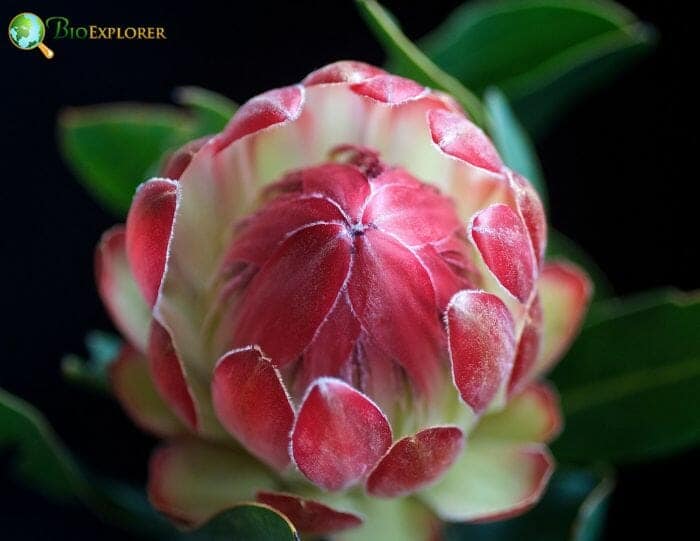
Some species under Proteales are cultivated as ornamentals. Others are consumed as food and traditional medicine[10]. Below are the example species of the order Proteales.
- American lotus[11] – The tuberous roots, leaves, and seeds were edible. The pods are often used in floral arrangements.
- Indian lotus[12] – The petals, leaves, and rhizomeWhat is rhizome?An underground stem, with nodes and short to elongate internodes. are edible. The lotus plant fiber is used in making lotus silk.
- London plane[13] – The tree is widely planted in streets because of its tolerance to pollution. The attractive brown color of the London tree wood is famous for making veneers.
- Sycamore[14] – The species is used as a shade tree. Wood is used to make furniture, sidings, and musical instruments.
- Kerr’s plane[15] – The Kerr’s plane bark has medicinal value.
- Wagon tree[16] – Protea nitida is commonly used as a garden species. The wagon tree wood is popular for ornamental furniture manufacture. The infusion from the bark is a treatment for diarrhea. The leaves of the Wagon tree are used for ink making.
- Large-nut sugarbush[17] – This species is a garden plant. The flowerheads are attractive cut specimens.
- Clanwilliam sugarbush
- Dillenia-Leaved Meliosma[18]
- Worm-Head tree[19]
![]()











